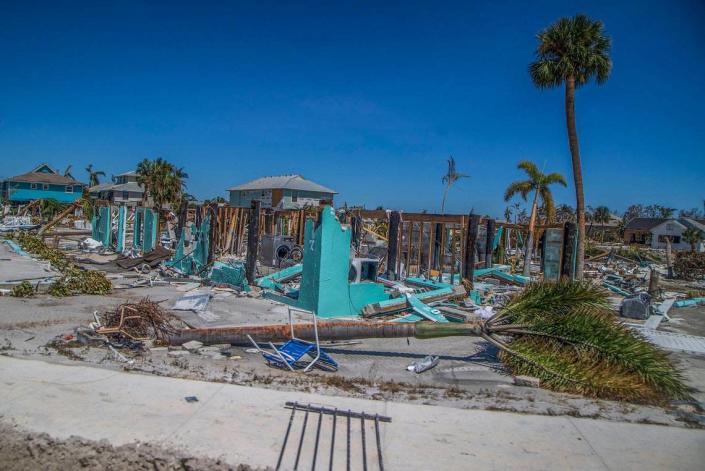In the aftermath of Hurricane Ian, Fort Myers Beach residents and tenants felt increasingly isolated.
All access to Estero Island from bridges on the south and north sides has been blocked by Lee County Sheriff’s Deputies to prevent vehicles and visitors from interfering with the search and rescue efforts. A growing fleet of bulldozers and dump trucks clears debris. Mounds of mud line Estero Boulevard, as people trickle from their homes or buildings seeking shelter with backpacks and dragging suitcases filled with belongings they could salvage.
More people who survived on the six-mile Estero Island are realizing that it’s not feasible to stay in the place Governor Ron DeSantis called “ground zero.” They have no electricity, no water, no cell phone service and no idea when they will be fixed.
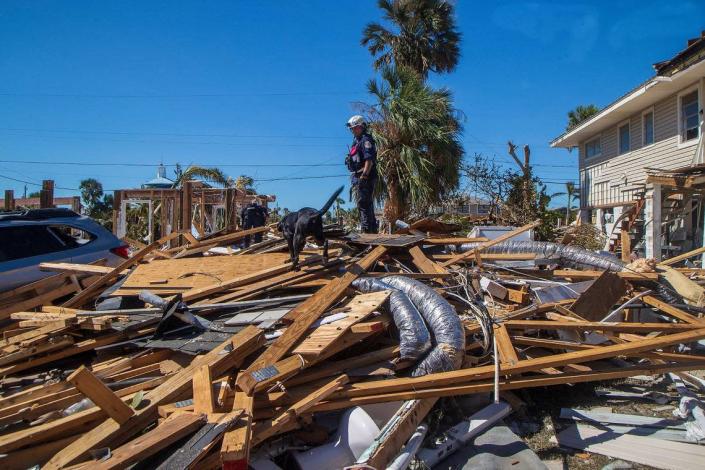
‘We live. That makes us happier than some of our neighbors, and we’re thankful for that,” said Craig Ruke, who lives on the second floor of a stilt house on Anchorage Drive. ‘But we are tired, dirty and hungry. We don’t have running water. We run out of food that hasn’t rotted yet. We get dehydrated. Our cars are broken. We did not have water or food delivered to the area.
“Everyone on this island is cut off.”
Rescue teams went street by street looking for what was left of the city grid. As the state’s death toll rose to about 85, Lee County accounted for about half — 42 — according to Sheriff Carmine Marceno. Most died by drowning. People speculated that many more bodies could have been buried under rubble or carried away by high water.
Hundreds of houses—mostly older timber-framed houses and charming cottages—were pushed by the waves 50 to 300 meters from where they originally stood, slamming into others along the way. They were crushed, reduced to piles of rubble with only the occasional AC duct or washing machine or a patch of roof or gray deck to mark them. A house on the beach had a second-floor closet intact, with clothes still hanging on the rod.
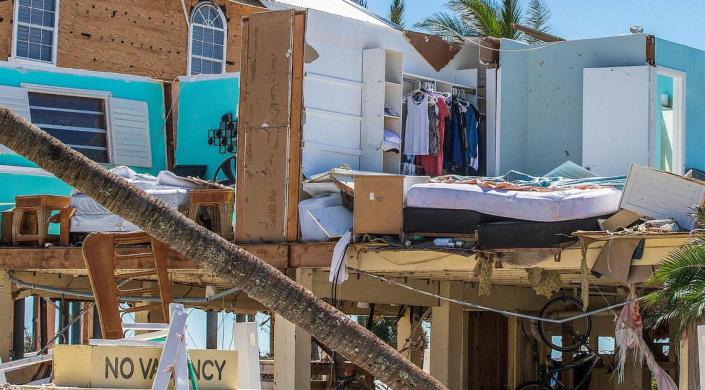
“People don’t realize the magnitude of the destruction until they get out of their homes,” said Iggy Carroll, public information officer for Miami Fire Rescue and Florida Task Force 2. “Then they understand there’s no way to support themselves here. .”
READ MORE: Lee County Sheriff Announces 42 Dead, Stands ‘100%’ on Evacuation Order
Newer, sturdier homes and multi-storey buildings have weathered the storm, some with minimal damage on the upper floors, others with blown-out windows and doors. Cars, trucks and motorcycles did not do well. Some were submerged in canals and pools, others buried in the thick mud that covered everything. The skeleton of an abandoned RV jutted out into Estero Boulevard.
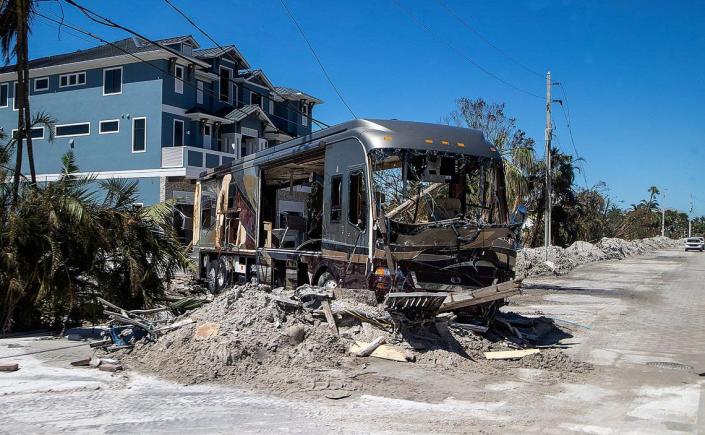
“These vehicles are useless because they are under water,” Carroll said as he drove past a fire station in Fort Myers Beach, pointing to the trucks parked in the garage. Carroll drove one of Miami’s specially modified Ford SUVs for high tide. “We learned in Miami how to build vehicles that can maneuver through flooded places.”
There were a handful of mini emergency posts along the side of the road that people set up on their own. They placed bottles of water and snacks on tables, covered with battered umbrellas. But there were no distribution centers for aid on the island. No mobile units handing out supplies.
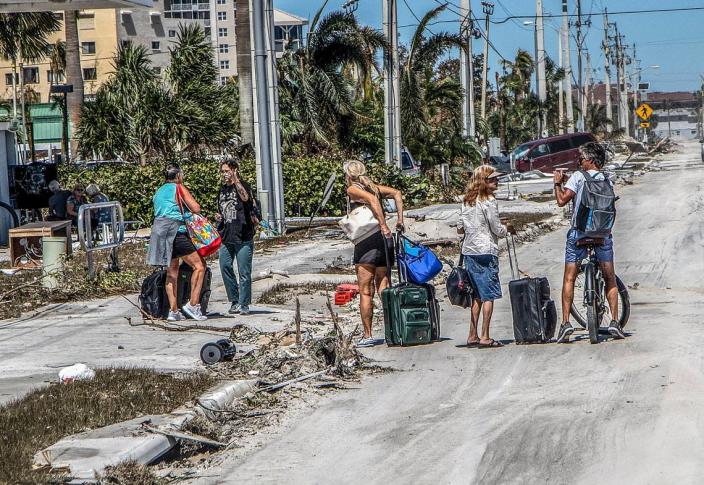
Jerry and Sharyn Kohart, retirees from Indiana, stayed in their sixth-floor beachfront apartment during Ian, watching their neighbors’ refrigerators and furniture float by.
“The water came in waves and waves and wouldn’t go away,” Jerry said. “The building shook. Charley zoomed on an identical path, but Charley was nothing compared to Ian.
READ MORE: ‘Like the Gulf Came in’: Hurricane Ian Flooded This Historically Black Naples Neighborhood
Of the 93 residents of their Sanderac condo building, seven decided to evict it. By the time the predicted trail moved south from Tampa, then Sarasota, and then Punta Gorda just north of them, it was too late to leave, they said. And based on what they described as Irma’s 2017 false alarm, when not much happened, they thought it would be fine.
In hindsight, they were foolish, they said. They had the means to evacuate when the order was issued Tuesday to their son’s high-rise apartment in downtown Fort Myers and did not.
“For some people with medical problems or a lack of transportation or no place to go, evacuation isn’t an option,” Jerry said. “We thought we could handle a storm surge of five feet, but clearly underestimated the warnings and were hit by a towering, treacherous storm surge. It came all the way to the third floor. It stayed right on top of us for hours. The building shook. The shutters sounded like they were going to break. We were scared.”
Will they return? Said Sharyn: “I said goodbye to our apartment. Maybe they’ll break it down.”
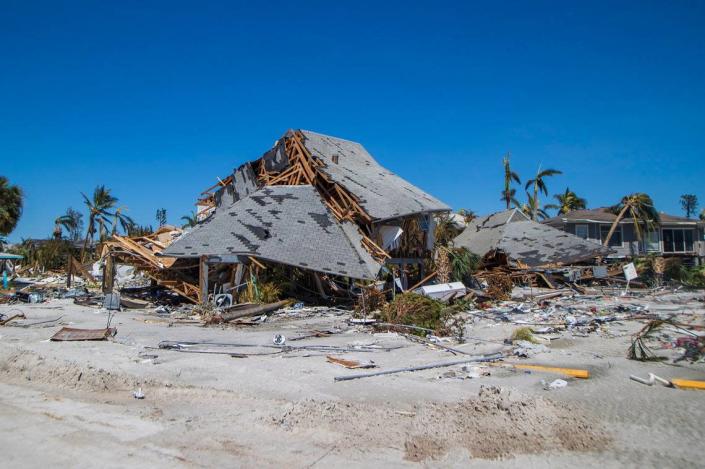
READ MORE: Coast Guard flight over battered SW Florida coast shows massive damage
Betsy Mangan, 77, also resided on the island. She saw houses carried away in the swirling water, with people in them.
“I doubt that people who got caught in the water can survive,” said Mangan, who said she fell in love with Fort Myers Beach when she first visited 22 years ago and was happy to retire to the island city with 5,600 inhabitants who live all year round. She got a ride to her cousin’s house on the mainland. “There was a strong current. It was wild water.”
The question of whether a new building had to be done arose.
“I don’t know if it’s worth it, if it’s even possible,” said Steven Light, owner of the demolished Cigar Hut. He described riding out the storm in a building that “vibrated like a sailboat in rough seas.” He was able to find his girlfriend, who had taken refuge in a flat on Lovers’ Key, a natural gem that has been shaved into stumps. “This was a beautiful park, one of the most visited in the state — or used to be.”
